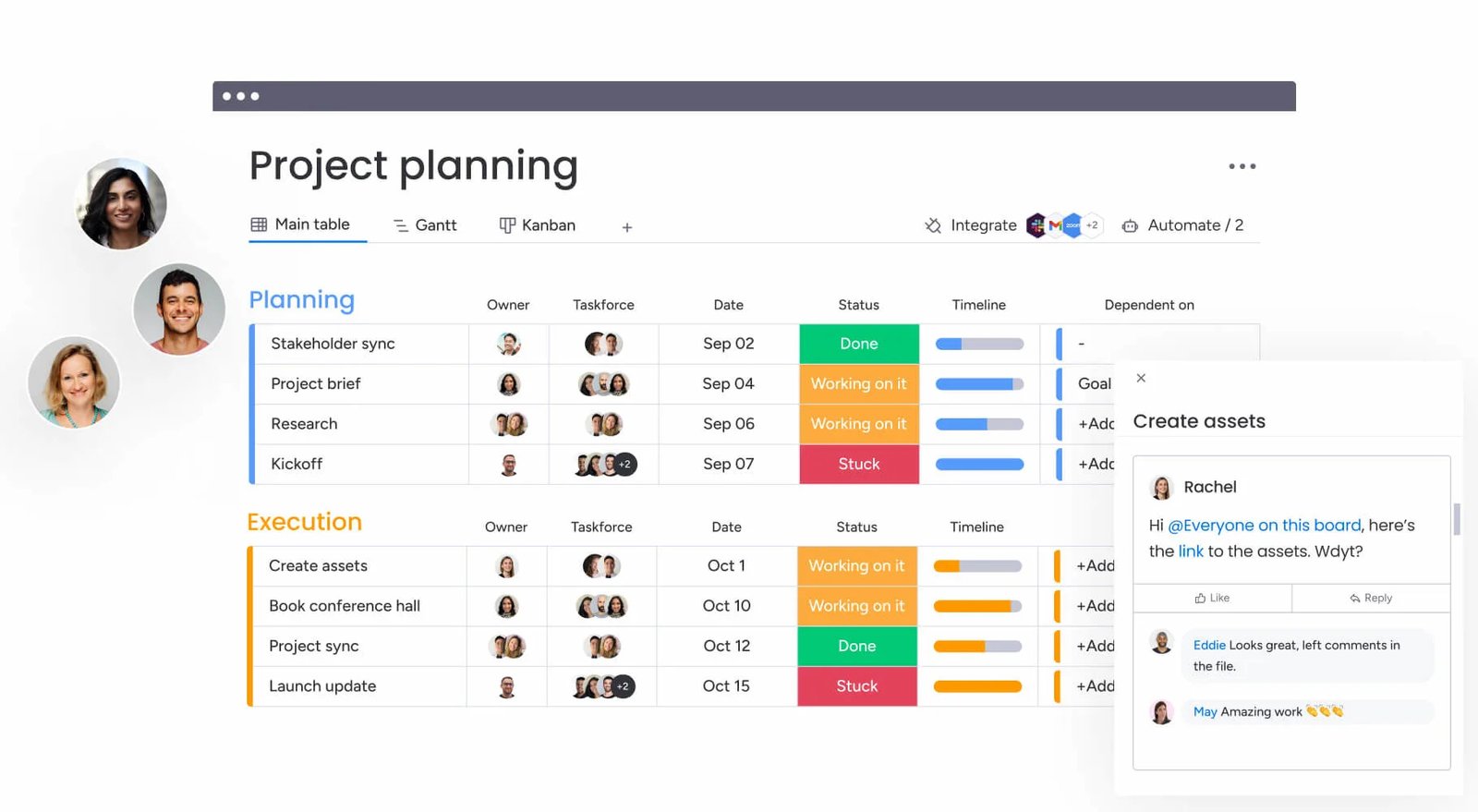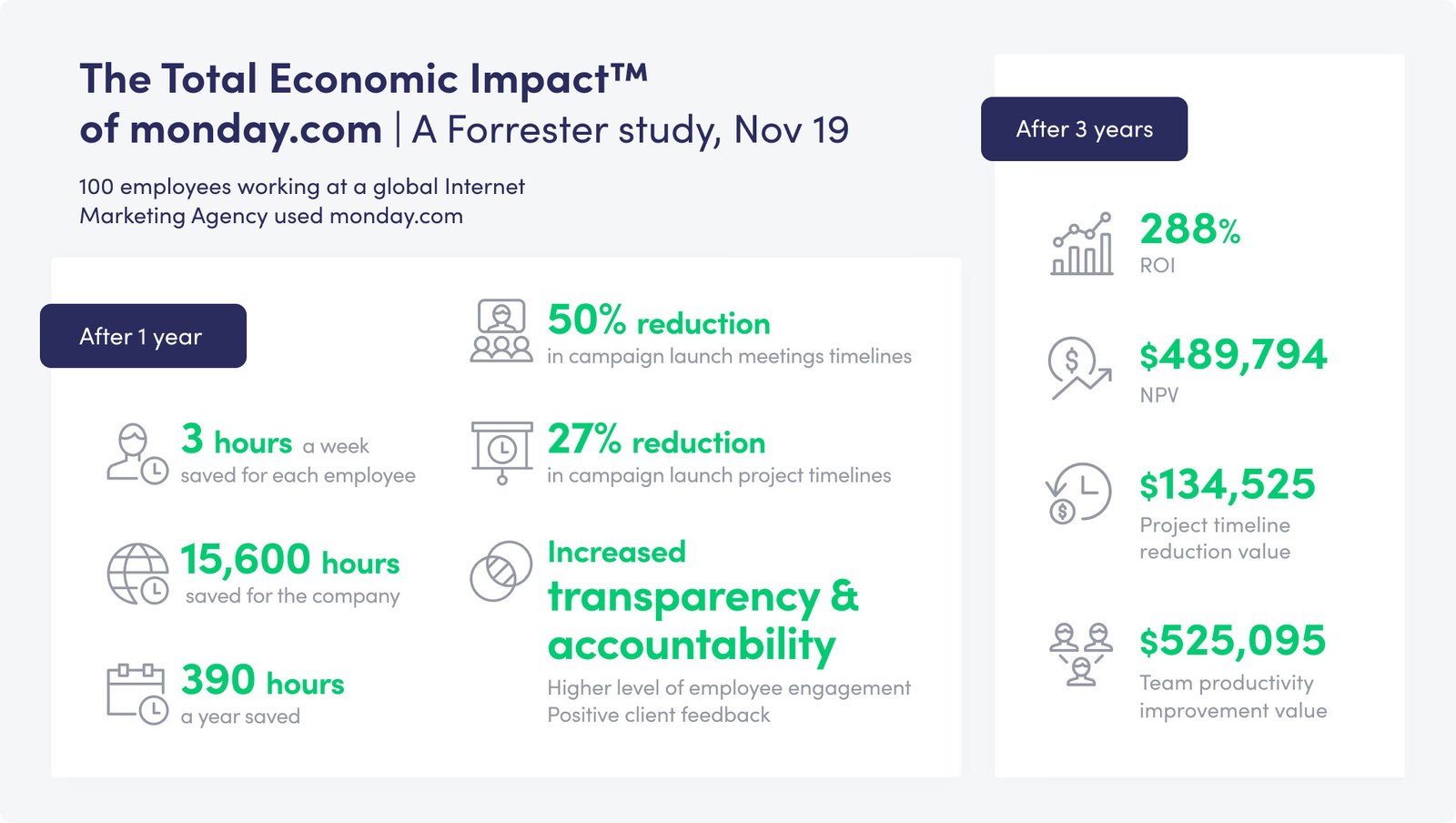For years, spreadsheets have been the go-to for tracking projects, sales pipelines, and internal workflows. They’re familiar, flexible, and free. But as your team grows, so do the cracks — manual updates, version chaos, zero automation, and limited visibility.
- No real-time updates — who edited what, and when?
- Limited automation — repetitive manual work never ends.
- Poor visibility — no big-picture tracking across projects.
- Version chaos — too many copies, not enough clarity.
Here’s a clear comparison of traditional spreadsheets vs. monday.com
| Feature | Spreadsheets | monday.com |
| Collaboration | Limited; multiple versions lead to confusion, emailing files back and forth. | Real-time collaboration; all team members work on a single live platform. |
| Automation | Manual updates and repetitive tasks must be done by users. | Built-in automations handle repetitive tasks, reminders, and notifications automatically. |
| Visualization and Dashboards | Basic charts; hard to track project status at a glance. | Interactive dashboards provide real-time insights, KPIs, and progress tracking visually. |
| Integrations | Limited; usually requires manual imports/exports or complex scripts. | Seamless integration with over 40+ apps like Slack, Salesforce, Jira, and Google Workspace. |
| Scalability | Can get messy and error-prone as projects grow. | Modular and flexible; easily scales from small projects to enterprise-level workflows. |
| Accountability and Permissions | Hard to track ownership; anyone can accidentally edit. | Granular permissions ensure task ownership, data security, and controlled access. |
| Workflow Flexibility | Static; formulas and structures are difficult to adapt for complex processes. | Fully configurable workflows, automations, and templates to fit any process without coding. |
| Transparency | Limited visibility across teams; siloed information. | Centralized platform ensures transparency and alignment across all teams. |
Sound familiar?
The solution?
Move from managing tasks to managing smart workflows.
Try monday.com — a modern work management platform built for dynamic, collaborative teams.
What is monday.com?

monday.com is a visual, collaborative Work Operating System (Work OS) that helps teams plan, execute, and optimize their work in one centralized platform. Designed for ease of use and flexibility, it allows users to configure workflows, automations, and integrations without any coding. By enabling real-time data sharing and visibility across projects, monday.com drives collaboration, accountability, and transparency—helping organizations streamline business processes and enhance overall efficiency.
Why Switching to monday.com Boosts Team Productivity?

According to Forrester report, an interviewed organization saw significant improvements in campaign launch efficiency with monday.com, thanks to streamlined workflows, automation, and enhanced communication. The platform fostered transparency, accountability, and employee engagement, while generating positive client feedback. Based on these results, the organization expanded monday.com adoption to HR, sales, and business development, strengthening cross-team collaboration and overall business performance.
Key features of monday.com
- Automations
monday.com automations streamline workflows, trigger actions automatically, and ensure nothing falls through the cracks—so teams can focus on what truly drives value. - Dashboards
monday.com dashboards provide a real-time, visual overview of projects, KPIs, and team performance, empowering leaders to track progress and make informed choices instantly. - Integrations
It integrates seamlessly with your favorite tools—from Slack to Salesforce—unifying your tech stack and ensuring a smooth, connected workflow across the organization. - Permissions
monday.com permissions let you define who can view, edit, or manage tasks, maintaining data integrity while enabling collaboration at every level of your business.
Common use cases of monday.com
- Project management: Plan, track, and deliver projects efficiently.
- CRM & sales pipelines: Manage leads, deals, and follow-ups visually.
- HR & hiring: Streamline recruitment and onboarding.
- IT support: Log tickets and monitor issue resolution.
- Marketing: Track campaigns, content calendars, and results.
How to Make the Switch (Without the Stress)
- Audit your spreadsheets: Identify what you’re tracking — tasks, budgets, or timelines.
- Import via CSV: Map your columns to monday.com items with just a few clicks.
- Set up your board: Add columns for Status, Due Dates, and Owners.
- Customize your workflow: Choose your views and set up automations.
- Invite your team: Assign roles, set permissions, and collaborate in real time
Worried about setup time? monday.com templates make onboarding easy.
Talk to our monday.com experts for a free trial.
Ready to Transform How You Work?
Don’t just take our word for it — see the difference yourself.
👉 Try monday.com for your next project and turn your spreadsheet chaos into streamlined, automated workflows today.


